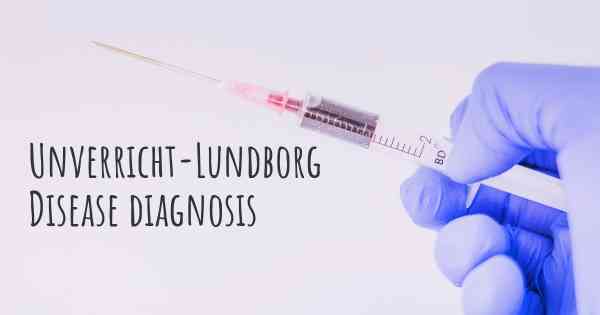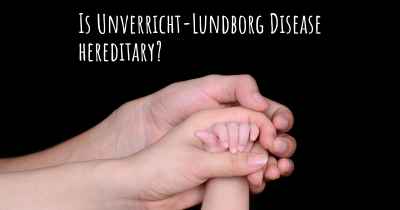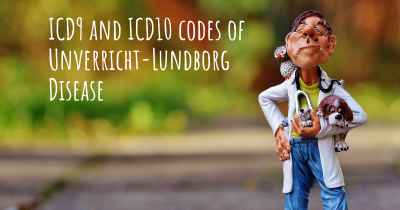How is Unverricht-Lundborg Disease diagnosed?
See how Unverricht-Lundborg Disease is diagnosed. Which specialists are essential to meet, what tests are needed and other useful information for the diagnosis of Unverricht-Lundborg Disease

Diagnosis of Unverricht-Lundborg Disease
Unverricht-Lundborg Disease (ULD), also known as progressive myoclonic epilepsy type 1 (EPM1), is a rare genetic disorder characterized by progressive muscle stiffness, myoclonic seizures, and cognitive decline. Diagnosing ULD can be challenging due to its variable presentation and similarity to other forms of epilepsy. However, a combination of clinical evaluation, genetic testing, and neurophysiological studies can help in confirming the diagnosis.
Clinical Evaluation
The initial step in diagnosing ULD involves a thorough clinical evaluation by a neurologist or an epileptologist. The medical professional will review the patient's medical history, including any family history of seizures or neurological disorders. They will also conduct a physical examination to assess the presence of characteristic symptoms such as myoclonus (sudden, brief muscle jerks), ataxia (lack of muscle coordination), and cognitive impairment.
Myoclonus: Myoclonus is a hallmark symptom of ULD and is characterized by involuntary muscle jerks that can affect various parts of the body. The neurologist will observe and document the frequency, distribution, and severity of myoclonus in the patient.
Ataxia: Ataxia refers to the lack of muscle coordination, which is commonly observed in ULD. The neurologist will assess the patient's gait, balance, and coordination during the physical examination.
Cognitive Impairment: ULD can lead to progressive cognitive decline, including difficulties with memory, attention, and problem-solving. The neurologist may use standardized cognitive tests to evaluate the patient's cognitive function.
Genetic Testing
Genetic testing plays a crucial role in confirming the diagnosis of ULD. The responsible gene for ULD is called cystatin B (CSTB), and mutations in this gene are associated with the disease. The most common mutation is a repeat expansion of a specific DNA sequence within the CSTB gene.
PCR-Based Testing: Polymerase chain reaction (PCR) is a commonly used technique to detect the repeat expansion in the CSTB gene. This test amplifies the DNA region containing the repeat sequence, allowing for the identification of the mutation. PCR-based testing can be performed on a blood sample or other appropriate tissue samples.
Genetic Sequencing: In some cases, genetic sequencing may be necessary to identify rare mutations or to confirm the diagnosis when PCR-based testing is inconclusive. Genetic sequencing involves analyzing the entire coding region of the CSTB gene to detect any abnormalities.
Genetic Counseling: Genetic testing for ULD has implications not only for the affected individual but also for their family members. If a mutation in the CSTB gene is identified, genetic counseling should be offered to the patient and their family. This can help in understanding the inheritance pattern of ULD and provide information about the risk of passing the condition to future generations.
Neurophysiological Studies
Neurophysiological studies are instrumental in supporting the diagnosis of ULD and assessing the severity of the disease. These tests evaluate the electrical activity of the brain and muscles, providing valuable insights into the underlying pathology.
Electroencephalogram (EEG): EEG is a non-invasive test that records the electrical activity of the brain using electrodes placed on the scalp. In ULD, EEG typically shows characteristic findings such as generalized epileptiform discharges and background slowing.
Electromyography (EMG): EMG measures the electrical activity of muscles using small electrodes inserted into the muscles. In ULD, EMG can reveal abnormal muscle discharges during rest or movement, confirming the presence of myoclonus.
Nerve Conduction Studies (NCS): NCS assesses the function of peripheral nerves by measuring the speed and strength of electrical signals. Although NCS findings are usually normal in ULD, they can help exclude other neurological conditions with similar symptoms.
Magnetic Resonance Imaging (MRI): MRI may be performed to rule out other structural brain abnormalities that could be causing the symptoms. However, MRI findings are typically normal in ULD.
Conclusion
Diagnosing Unverricht-Lundborg Disease requires a comprehensive approach involving clinical evaluation, genetic testing, and neurophysiological studies. The clinical evaluation focuses on identifying characteristic symptoms such as myoclonus, ataxia, and cognitive impairment. Genetic testing, primarily PCR-based testing and genetic sequencing, helps in confirming the diagnosis by detecting mutations in the CSTB gene. Neurophysiological studies, including EEG, EMG, and NCS, provide supportive evidence and help assess the severity of the disease. Early and accurate diagnosis of ULD is crucial for appropriate management and genetic counseling.








